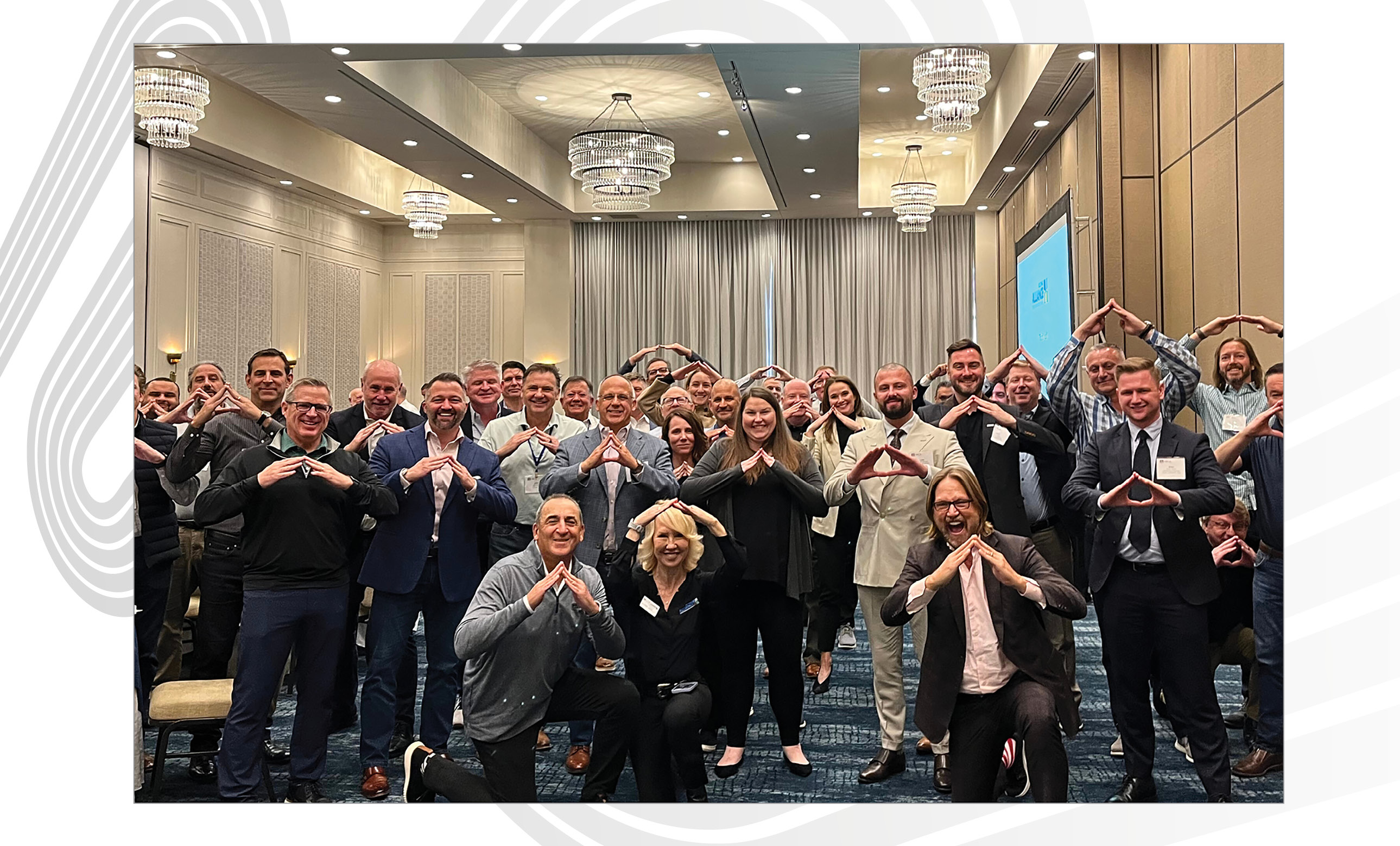
In the highly competitive and dynamic roofing industry, the success of any roofing project often hinges on the inclusion and collaboration of skilled and reliable subcontractors. One essential element of this meticulous process is prequalifying subcontractors.
Prequalifying subcontractors provides many benefits that help mitigate the overall risks of roofing projects while delivering quality installations and service.
Benefits
Subcontractor prequalification provides three main benefits: risk mitigation, quality assurance, and compliance and regulations.
Risk mitigation
Risk is multifaceted across a roofing business, and a negative outcome by a subcontractor can have a ripple effect, ultimately affecting worker safety, company operations, legal liability, financial liability and your company’s reputation among other things. Subcontractors with a proven track record in roofing provide valuable expertise and can elevate a roofing project. Subcontractor prequalification is a critical step in effective risk management. By thoroughly vetting potential subcontractors, you can identify and address potential risks before they escalate. This includes evaluating subcontractors’ financial stability, safety record and past performance. This proactive approach helps the timely, successful completion of roofing contracts.
Quality assurance
Roofing projects demand a high level of precision and quality. Prequalifying subcontractors allows you to assess their technical expertise and experience. This helps ensure subcontractors possess the necessary skills to meet project specifications and industry standards.
The absence of prequalification may result in working with subcontractors who do not possess the necessary roofing skills, experience and/or technical expertise. This can compromise the quality of work, leading to subpar construction and construction defects, frequent rework and even potential structural issues. Poor quality not only affects a project’s success but also can damage your reputation.
Compliance and regulations
The roofing industry is subject to various regulations and compliance standards. Subcontractor prequalification includes verifying potential partners adhere to all relevant regulations, licensing requirements and safety standards. This helps ensure a project proceeds smoothly without legal or regulatory complications.
Insufficient vetting of subcontractors may expose you to increased liability. Inadequate insurance coverage, poor safety practices or noncompliance with industry standards can lead to costly legal battles and damage to your reputation. Proper prequalification helps mitigate these risks by ensuring subcontractors have appropriate insurance and adhere to safety protocols.
Key considerations
Some key considerations when prequalifying a subcontractor include financial stability, emphasis on safety, specialized experience for specific projects, licensing and certification requirements, and capacity and resources.
Financial stability
Beyond general financial health, roofing subcontractors need to demonstrate an understanding of the unique financial aspects of roofing projects. Accurate roofing bids and estimates are essential for financial success. Failing to properly account for safety in a bid, for example, can be a sign of subpar safety performance.
Assessing financial stability as part of subcontractor prequalification is a proactive risk management strategy that minimizes the chances of unforeseen costs, providing a foundation for cost-effective roofing projects.
Additionally, adequate insurance coverage for roofing projects and a robust bonding capacity are essential considerations to safeguard against unforeseen challenges. Specifically, reviewing and evaluating the insurance coverage of subcontractors is a main consideration for any subcontractor prequalification. Verify commercial general liability, workers’ compensation (required by most states) and commercial auto coverages if applicable.
CNA Insurance Cos., Chicago, strongly recommends every subcontractor provide a current certificate of insurance that includes current policy limit requirements. These requirements should be discussed with your legal counsel or insurance adviser. CNA Insurance also recommends ensuring the policy term extends beyond the end of the project warranty period, not just when the work is completed. In addition to the certificate of insurance, you should request a copy of the policies and review or ask your broker to review on your behalf.
Additionally, CNA Insurance recommends reviewing a subcontractor’s commercial liability policy for any exclusions such as residential projects (condominium, apartments, multifamily) or other exclusions such as mold, asbestos, height and/or open-hole restrictions. You also should require your subcontractors to have independent workers’ compensation coverage and ensure the coverage is maintained throughout the entire project. If a subcontractor does not have workers’ compensation coverage and an employee injury occurs on your project, the claim could fall back to you, the hiring contractor.
Bonding requirements often are used as another indicator of a subcontractor’s financial stability. Contractors and subcontractors with bonding capabilities demonstrate a level of financial responsibility and reliability. Bonds serve as a risk management tool, offering protection to project owners, contractors and suppliers against financial losses resulting from a subcontractor’s default or nonpayment.
As with insurance coverage limit requirements, you should consult a financial professional when requiring and establishing criteria for evaluating the financial stability of subcontractors.
Inadvertently engaging with subcontractors who lack financial stability poses a significant risk as financially unstable subcontractors may struggle to meet their financial obligations, leading to delays, disputes or even project abandonment. Inadequate financial checks can result in unforeseen costs and financial headaches later.
Safety
Safety is paramount in any construction endeavor, but the roofing industry with its unique challenges requires specific safety protocols. Examining a subcontractor’s roofing-specific safety records; adherence to Occupational Safety and Health Administration standards, including past inspection and citation data; and tailored safety training for roofing operations helps ensure a safe work environment.
Safety requirements and expectations should be referenced in subcontracts including OSHA or the state plan equivalent requirements, as well as the hiring contractor’s specific safety requirements. Encourage continuous training and monitor subcontractors to ensure they are meeting expectations. Be diligent that any safety information is communicated in an effective manner and understood by all workers. This includes ensuring all potential language barriers are being addressed.
Consider conducting a pre-job planning meeting or using onboarding with key subcontractor personnel to review expectations for a project, especially safety. Take this opportunity to identify potential job-site specific safety issues and remind subcontractor leadership of these potential issues.
Regular and routine safety audits should be conducted throughout a project to determine whether a subcontractor is adhering to the agreed upon safety requirements and expectations. Document safety issues and provide notice of any safety violations to the subcontractor through the contract agreement. Conversely, don’t overlook opportunities to recognize your subcontractors for a job well done, working safely, or going above and beyond expectations.
Ignoring safety assessments during prequalification can expose a project to increased safety risks. Subcontractors with inadequate safety measures can contribute to accidents, injuries and regulatory violations. This not only endangers the well-being of workers but also can lead to legal consequences, fines and project delays.
Licensing and certification
Roofing projects often involve navigating through a maze of state-specific licenses, certifications for various roof systems and compliance with local building codes. Subcontractors must present comprehensive documentation of their adherence to these roofing-specific regulatory requirements as part of a comprehensive subcontractor prequalification process.
Licensing and certification requirements play an important role in ensuring roofing subcontractors have the necessary qualifications to undertake projects while adhering to industry standards and local regulations.
Licensing requirements typically apply to the subcontractor or contractor overseeing a project rather than individual workers. Although some jurisdictions have tougher licensing requirements, the licensing process ideally should ensure contractors or subcontractors have the necessary knowledge, skills and qualifications to manage construction projects, adhere to safety regulations and comply with local building codes.
Individual roofing workers employed by a subcontractor are not typically required to obtain licenses. Instead, roofing contractors and subcontractors are responsible for ensuring their workers are adequately trained, follow safety protocols and are qualified to perform assigned tasks.
It is crucial for contractors and subcontractors to understand and comply with licensing requirements in the jurisdictions where they operate. This helps maintain a high standard of professionalism, ensures compliance with local regulations, and contributes to the overall safety and quality of construction projects, including roofing projects.
Some states do not require licensing; however, they may require subcontractors to register with the state. This also needs to be verified as part of the subcontractor prequalification process. Subcontractors who specialize in certain roof systems and possess certifications attesting to their expertise are especially helpful.
Staying up to date with local building codes is essential, as these codes may be revised periodically. Subcontractors should undergo regular training and education to ensure they remain knowledgeable about any changes to codes affecting roofing projects.
Understanding and meeting these licensing and certification requirements are non-negotiable aspects of subcontractor prequalification in the roofing industry. These credentials also contribute to the overall success, safety and compliance of roofing projects. Adherence to these standards helps create a robust and reliable network of subcontractors in the roofing sector, fostering a culture of excellence and professionalism.
Capacity and resources
Evaluating a subcontractor’s capacity and resources is critical. The roofing industry experiences peak seasons, and subcontractors must demonstrate the capacity to manage the workload efficiently during these periods.
Specialized roofing equipment, a skilled workforce trained in roofing techniques and safety requirements, effective project management and leadership are integral components. Evaluating a subcontractor’s capacity and resources involves a comprehensive examination of his or her capabilities from a technical and managerial standpoint. This prequalification step ensures the subcontractor is well-equipped to deliver high-quality roofing projects on time and within budget, contributing to overall project success.
Engaging with subcontractors without a proper prequalification process may lead to delays in project timelines. Inexperienced or unreliable subcontractors may struggle to meet deadlines, causing project setbacks. Delays not only inconvenience clients but also can result in financial penalties and damage your relationship with clients and stakeholders.
In addition, subcontractors who are not adequately vetted may lack effective communication skills or the ability to collaborate seamlessly with you or other project stakeholders. Poor communication can lead to misunderstandings, conflicts and breakdowns in collaboration, affecting overall project success.
An indispensable tool
Subcontractor prequalification is necessary for achieving excellence. By emphasizing specialized experience, financial stability, safety, licensing and capacity, you can ensure you engage with subcontractors who meet the unique demands of the industry.
Neglecting the subcontractor prequalification process can lead to various pitfalls that may have detrimental effects on you and your roofing projects.
From risk reduction to cost efficiency and enhanced project quality, the benefits of prequalifying your subcontractors make the extra time and effort worthwhile. When the roofing industry adopts and conducts rigorous prequalification practices, it undoubtedly elevates the overall standard of roofing projects.
CHERYL AMBROSE, CHST, OHST, is NRCA’s vice president of enterprise risk management.



